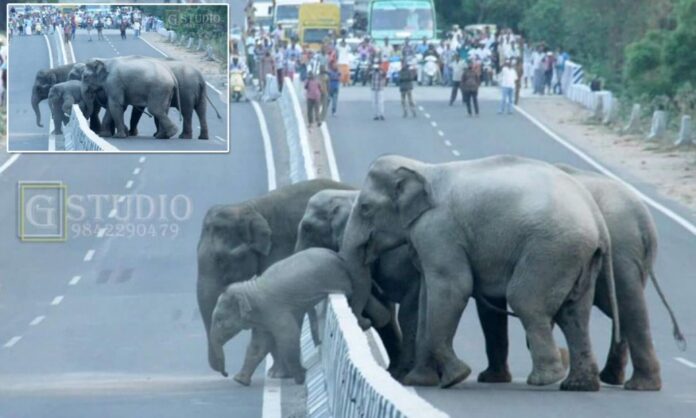It doesn’t get much cuter than this as the reason of a traffic jam: a tiny elephant straining to make a rapid crossing – and getting a helping hand (or trunk) from mum.
This little guy was the tiniest member of a herd that opted to cross the road in the Coimbtore district of Tamil Nadu, a southern Indian state.
However, what provides for a good image does not make for happy drivers.
But, the issue is more important than a few irritated drivers.



As India’s growing urbanisation continues, elephants that once roamed the vast forests are increasingly coming into contact with their human neighbors, who are being pushed into their path as migration routes become restricted.
Coimbatore, as well as adjacent Hosur and Gudalur, are specific hotspots with up to 700 elephants.
Wildlife campaigners allege that elephants murder at least 20 people in this region alone each year – elephants that would never have gotten close to a human settlement just a few years ago.
Meanwhile, 10 to 15 of the majestic beasts are killed on the roadways by speeding automobiles or poachers seeking their precious ivory tusks.
But, according to Indian government statistics, wild elephants kill considerably more people than tigers, leopards, or lions across the country. In the year to 2015, 391 people and 39 elephants were killed in the country as a result of man-animal conflict.


Nevertheless, wildlife activist Umesh Marudhachalam is clear about who is to blame.
‘The issue is not with the animals; it is with us. We’ve ruined their habitat and obstructed their migration path. ‘What is left of the buffer should be kept,’ he said.
According to campaigners, one of the main causes of these disputes is the blockage of elephants’ traditional migratory path, which leads in elephants trespassing into human habitations and devouring fields.
Related Posts:
Lions cause 100-car traffic jam by MATING in the middle of the street
Elephant calf is rescued by its elders as lions try to bring it down.
